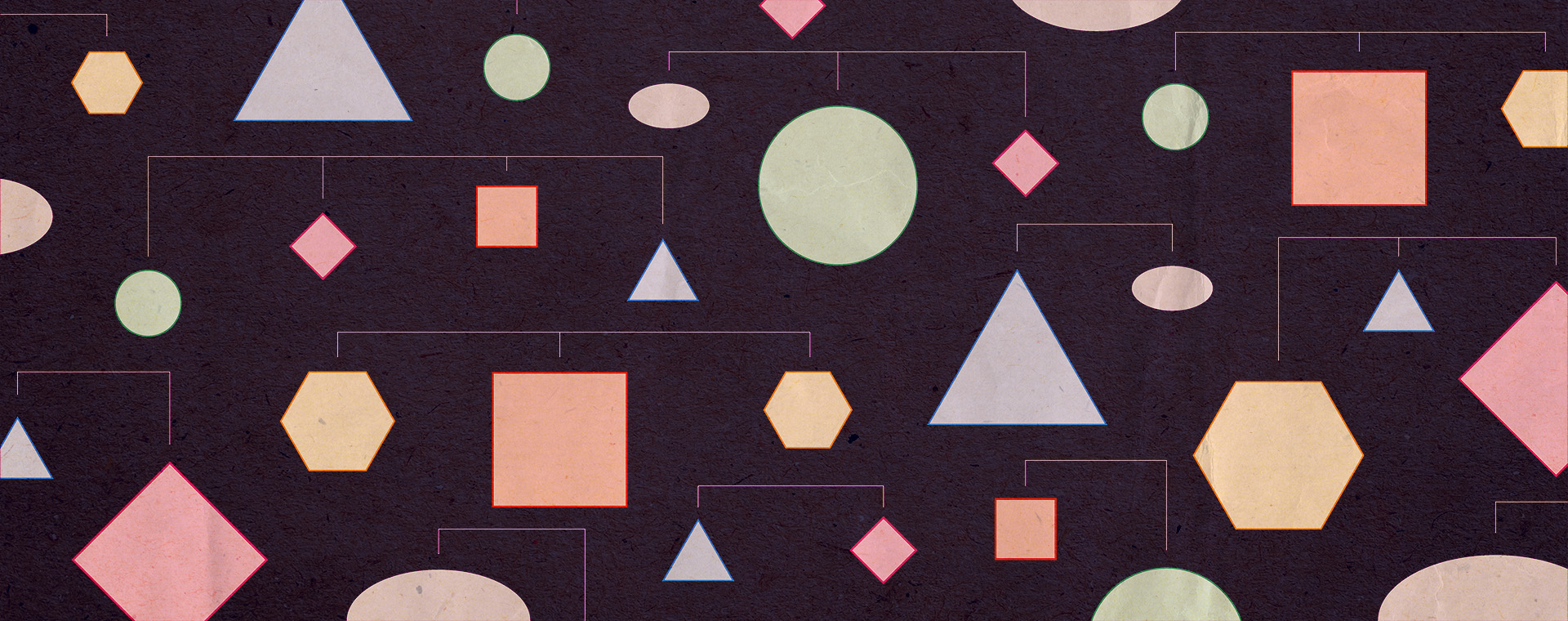Let’s break down the essential components of a successful branding project—from assembling the right team to defining your position in the marketplace. Whether you’re launching a new brand or evolving an existing one, a well-executed branding project lays the foundation for how your company will be perceived and how it will thrive in the long term.
What is a branding project?
Before discussing what goes into a brand project, let’s define what branding is first. A common misconception is that branding is just about the logo, but it’s more nuanced than that. Branding represents your company’s mission, values, personality, offerings, and more! All of these elements work together to shape how your audience perceives your company and, ultimately, its reputation.
For example, Starbucks writes their customers’ names on their cups to personalize the experience and form a connection. Now, the jury is still out on whether or not sometimes the misspelling of names is done on purpose. But, in this instance, the branding is the sentiment behind that micro-interaction, customer service, and the goal of making the customer feel special, and even the conversation and Instagram story spurred from a misspelled name.

I imagine you’re beginning to understand the complexity of branding after that example and why it’s essential to do everything with purpose, regardless of how big or small, because effective branding:
- Builds recognition and trust: Brand consistency helps audiences recognize your company and fosters trust.
- Helps you stand out: Effective branding differentiates you from competitors in your space.
- Keeps your team aligned: A well-defined brand creates a common goal for everyone in your company to rally around.
- Your purpose: Branding solidifies your company’s reason for existing and communicates it clearly to your audience.
But how do you build a compelling brand? Establishing a brand is a long process that doesn’t happen overnight and can take years to build recognition, and every step must align with your business goals. However, the fundamentals remain the same whether starting from scratch, rebranding, refreshing an existing brand, changing directions, or adding a new product line. The work involved in these projects typically falls into the following overlapping phases:
- Building the right team
- Brand positioning
- Brand messaging
- Brand expression
- Brand guidelines
- Brand marketing
Phase 1: Building the right team
Building out your team might seem like a no-brainer or something you don’t need to consider, especially if you’re partnering with an agency, but trust us when we tell you it shouldn’t be an afterthought. Not setting expectations and resources for your branding project can impact timelines, decision-making, and outcomes. Branding is a collaborative process that requires input from you because while we’re experts in branding, you’re experts on your company, services, and industry. So, when building your team, ask yourselves the following questions to determine who should be involved in the branding project.
- Who on your team will be involved in setting direction and giving feedback? We recommend a team of 3-5 members, as more than that can lead to never-ending feedback loops and dilution of our primary goal.
- Who on your team will be the main point of contact and constant? We recommend having one person involved in all phases of the work to help keep all team members aligned on the overarching goals — context matters!
- Who are the final decision-makers? Is there an executive team or board that needs to review and sign off on the work? A strategy for how and when you present work to them and what feedback you’re looking for must be factored into the timelines.
- Are there other agencies or vendors that must be included in the work? If yes, what are their expectations and responsibilities?
Having these questions answered and resources defined before the work begins will ensure you set yourself up for a successful branding project as you move into the following phases.
Phase 2: Brand positioning
Brand positioning is the distinct space your brand will hold in the minds of your target audience and what differentiates you from the competition. For example, Tesla positions itself as a premium, innovative electric vehicle brand, blending luxury with sustainability. This distinguishes Tesla from other car manufacturers. It’s all about answering the question: Why should someone choose your brand over others? But to answer that question, you also need to answer:
- What is your company’s mission and long-term goals?
- What is your value proposition?
- Who is your target audience, and what problems do you solve for them?
- Who are your competitors, and how are you different?
Answering these will require extensive research, brainstorming, feedback loops, and revisions, but once you’ve established your unique identity with your audience, it will act as a foundation for all decisions and initiatives moving forward.
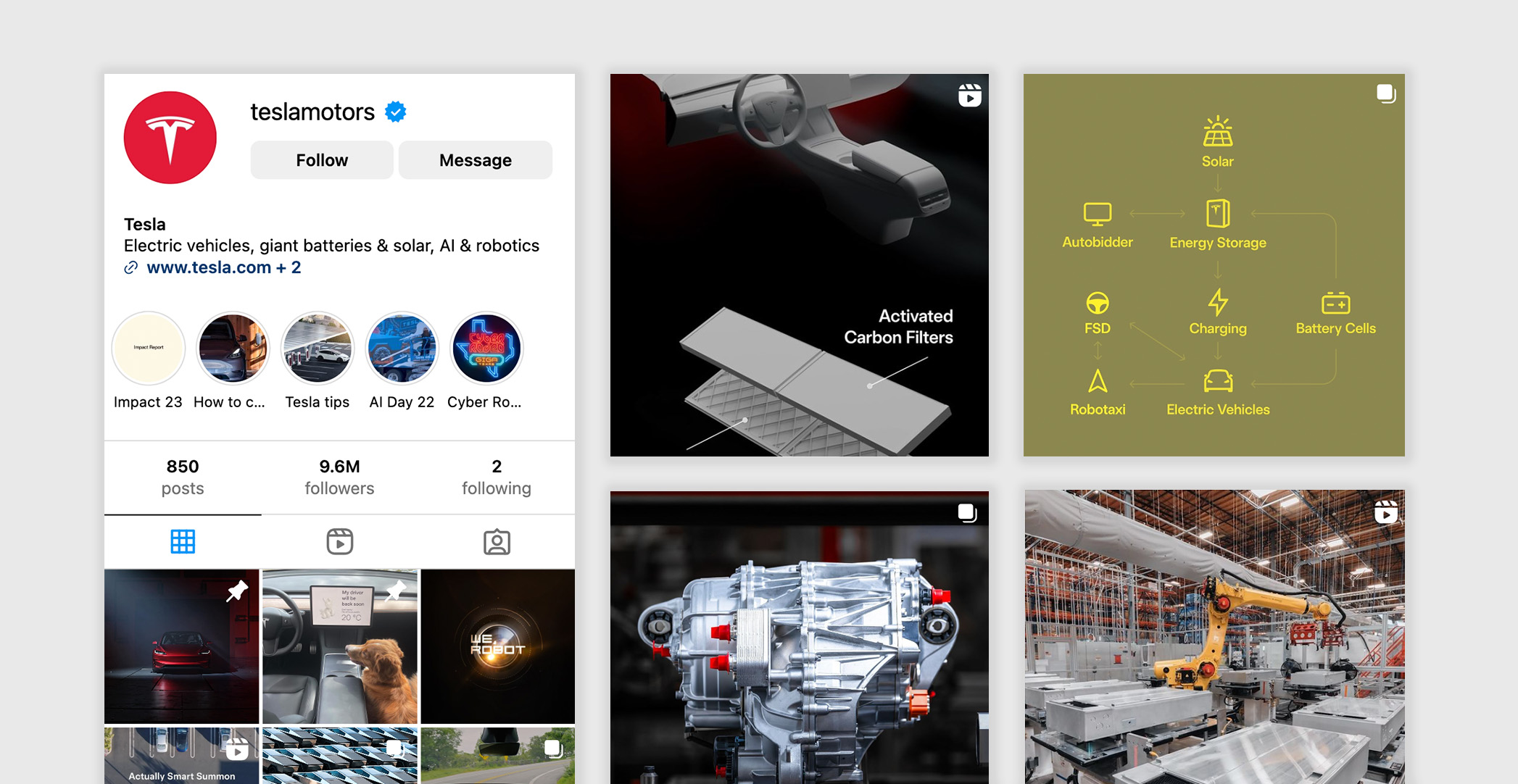
Phase 3: Brand messaging
Brand messaging is how you communicate your brand position to the world—the key takeaways you want your audience to remember and what it stands for through:
- Your company’s name
- A brand promise (the core value you offer)
- Your tagline (a memorable phrase that reflects your brand’s identity)
- Your tone of voice (your personality or the style in which you communicate)
To put this into practice, let’s look at Tesla again. Their tagline, “Accelerating the World’s Transition to Sustainable Energy”, emphasizes its position of innovation, luxury, and sustainability in a tone of voice that is intelligent, matter-of-fact, and confident in its delivery. Together, brand positioning and messaging shape how your audience perceives your brand, making it easy for customers to understand your unique value and connect with your company on an emotional level.
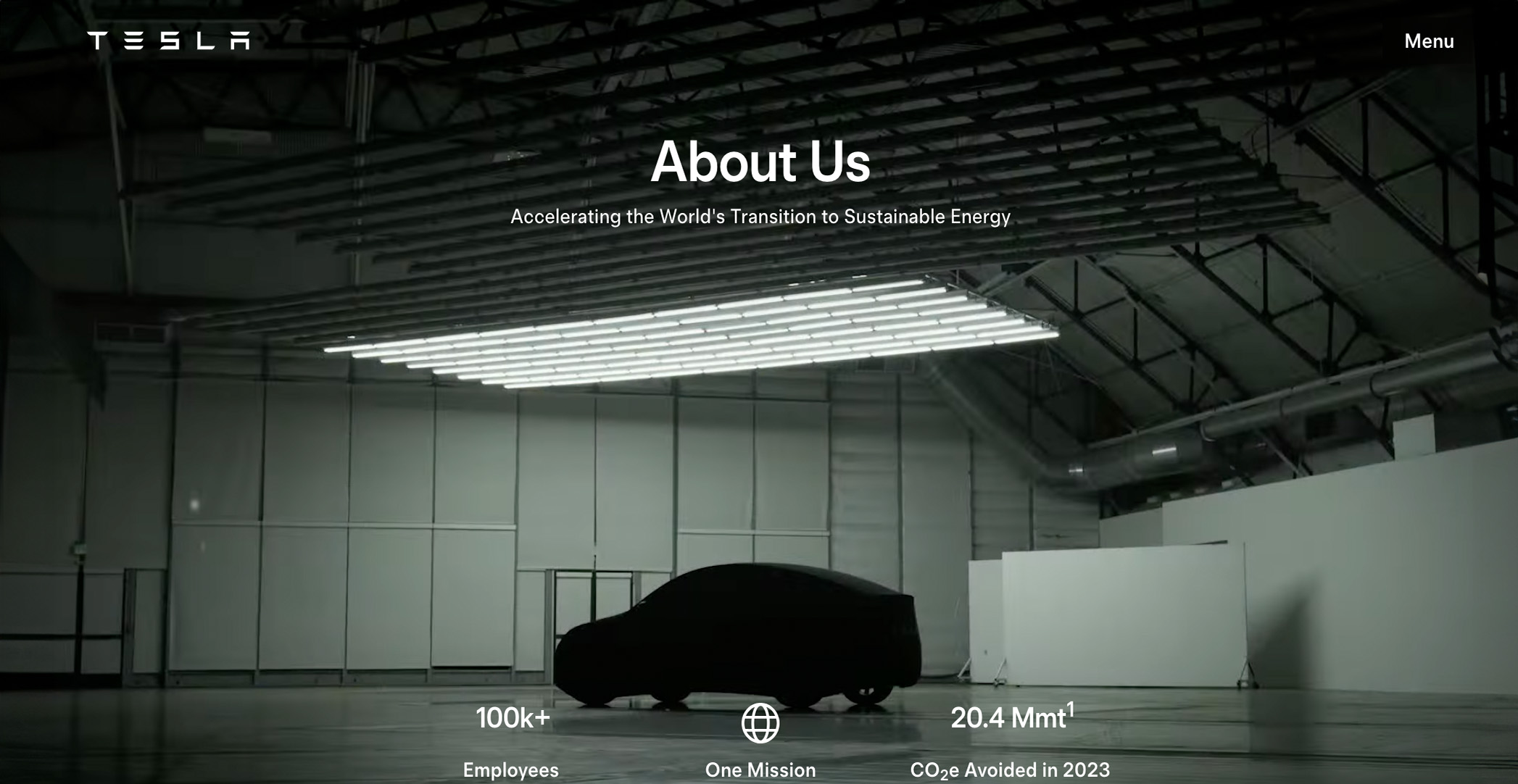
Phase 4: Brand expression
Once your positioning and messaging are in place, you can begin building your brand’s visual components to support your decisions. Like your logo for one, but not to be a broken record; that’s still only one way to represent yourself. Many of our clients focus too much on getting every aspect of their brand, purpose, and services reflected in the logo alone. However, there are many other visual elements you can explore to symbolize your brand like:
- Colour: Despite being known for its instant film and cameras, Polaraid does not depict a camera in its logo. Instead, the brand uses an emblem of colours that have evolved over generations but have always consisted of blue, green, yellow, orange, and red, reflecting the colour spectrum and possibilities of the brand’s products and how, with their products, you can save the most colourful moments.
- Imagery (illustration, iconography, photography, elements etc.): Zara is an international fashion company that sells clothing, accessories and beauty products. It’s known for its artistic editorial-style product photography, which gives its website a magazine-like experience. This brand element is often debated online and by customers for its user experience challenges, but despite this, the brand is successful and stays true to its aesthetic of elevated fashion for the average person. Some brands even explore creative elements like brand mascots.
- Typography: Custom fonts can add a lot of personality to a brand or product line, like Maynard, a candy company known for its products like Wine Gums, Fuzzy Peaches, and Sour Patch Kids. While all the packaging is different and reflective of the product and what to expect, the general style of their typography is playful, soft, and rounded.
- Packaging: Coca-Cola is known for its bright red and cursive logo. However, it’s also known for its iconic bottle featuring curves and grooves, which are said to be so differentiating that people can identify it in the dark.
- Apparel style: Lululemon, an active lifestyle brand, is known for its modern and sleek pieces that are more elevated than regular athleisure clothing, making its products identifiable at a glance despite them putting their logo’s emblem in discreet places.
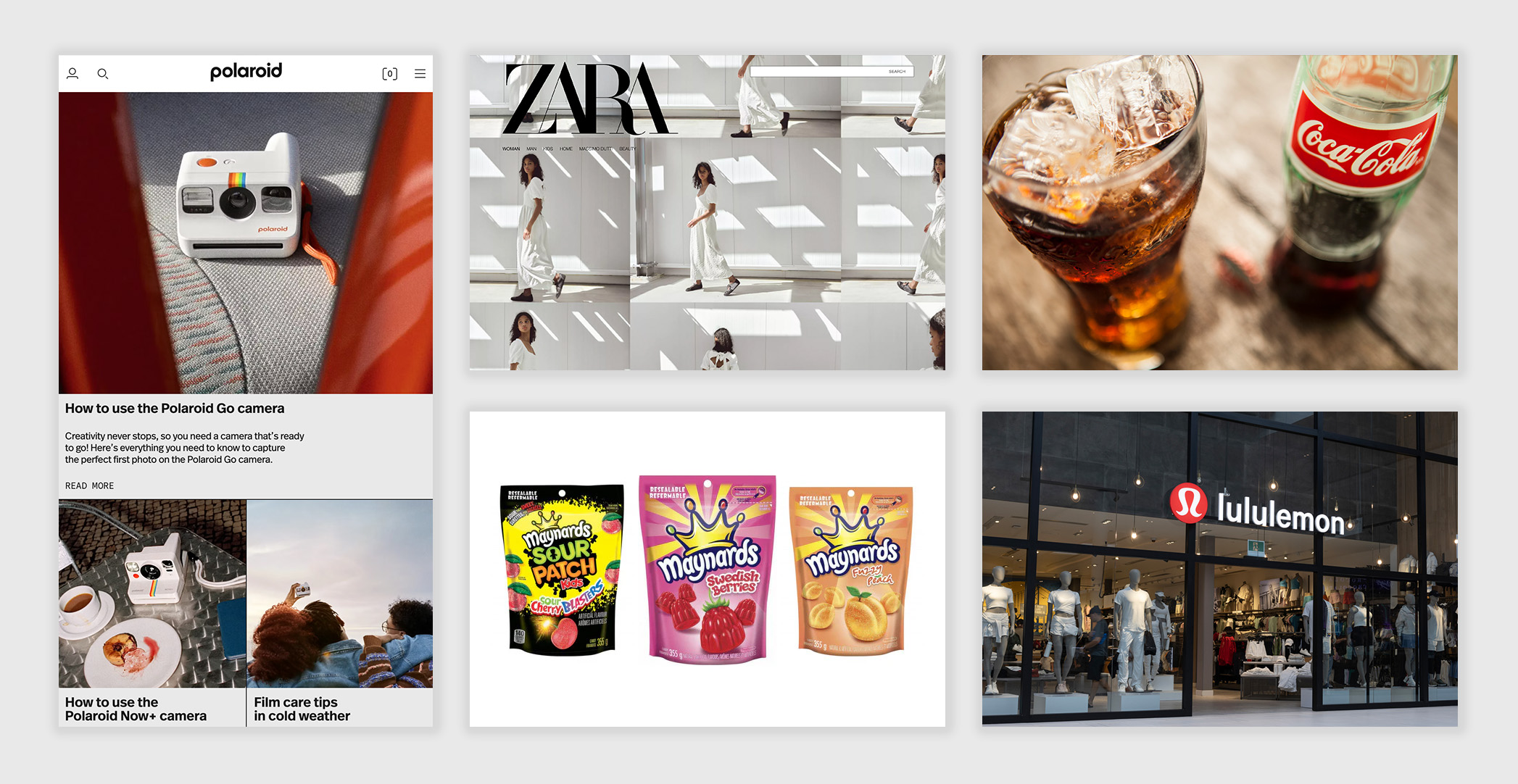
As you can see from the examples above, there are many ways to stand out from your competition. These are just a few examples of how, but collectively, elements like this define your brand’s identity and expression, making it recognizable.
Phase 5: Brand guidelines
The outcome of phases 1 through 4 is consolidating all of your decisions into a document called brand guidelines. These guidelines will serve as a blueprint for your company’s future marketing and business development efforts and may cover the following sections and more:
- Brand position and story
- Brand mission and values
- Brand messaging and tone of voice
- Your target audiences and user personas
- Logo usage
- Brand expression, like typography, colours, icons, etc. and how to use them
- Templates and layout guidance
Over time, your guidelines will grow and evolve to adapt to your business’s new challenges. However, they ensure that everyone stays aligned with your brand’s overarching goals regardless of the project or team because consistency is vital for establishing and maintaining brand recognition.
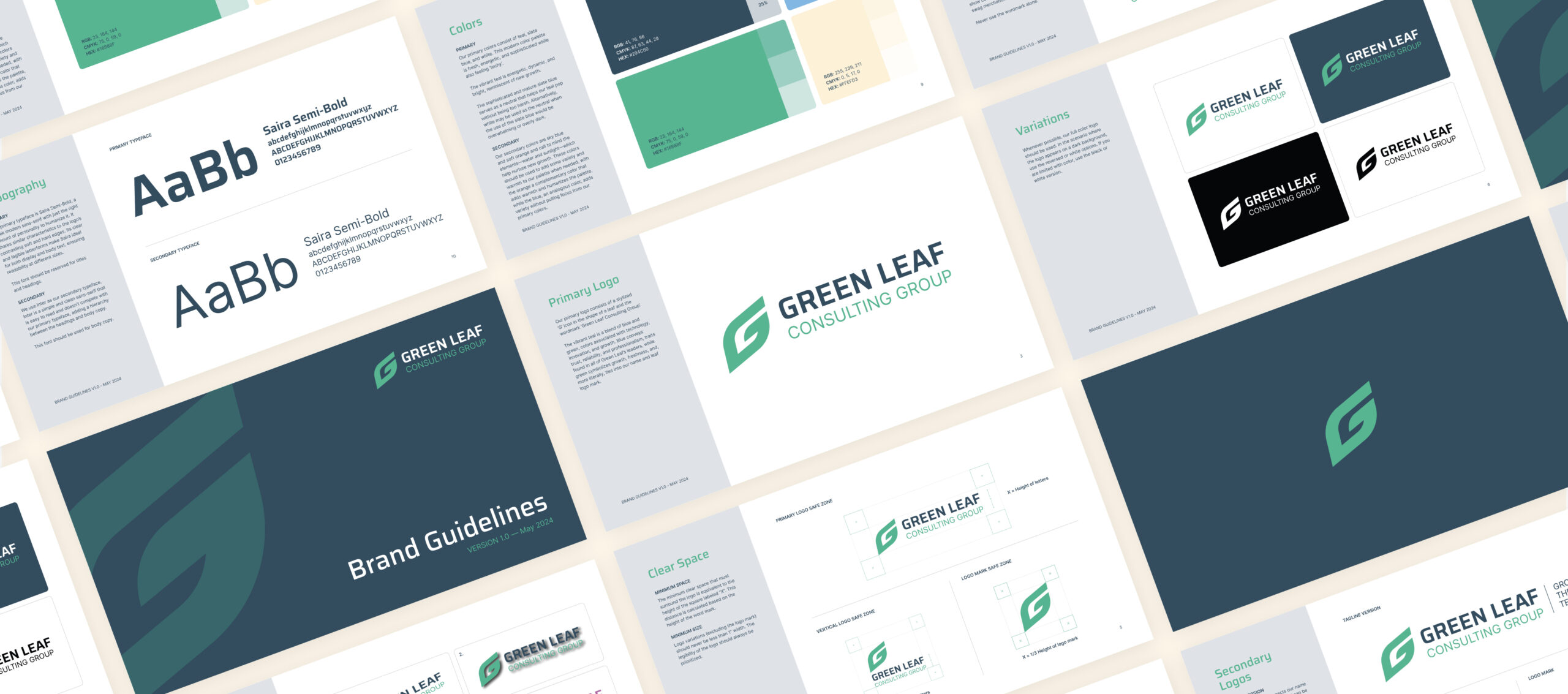
Phase 6: Brand marketing
The last and final phase of a branding project is planning how to announce your new or refreshed brand, product, or line of business to your target audience and market. Which could involve thinking about the following items:
- The announcement: How do you want to tell the world? An example could be a drawn-out social media campaign teasing the release up until the final announcement.
- Website strategy: Do you need a new website? Or does your current one need a refresh to align with your new or refreshed branding?
- Asset development: Aside from your website, what other key collateral pieces do you need on your launch date? Items could be social media photos, trade show items, print material, packaging, etc.
- Social media strategy: What platforms best fit your audience and messaging? Also, what assets do you need for social?
- Rollout timeline: If you’re an established company and brand, a slow release and phased approach to rebranding is the best way to avoid confusing your current consumers and keep them engaged and excited.
- Ongoing strategy: What does the rest of your marketing and branding strategy look like after the launch?
The rollout may look different depending on your company, industry, and whether or not you’re a new or existing brand. However, it should set your company up for success in the long term, supporting your ongoing marketing and business needs. Think about how you’ll start injecting your brand in everything you do.
For example, when helping Equitable launch its new branding, we took a phased approach, starting with announcing it through a video campaign explaining the brand’s evolution and the purpose of the change, a light refresh of its existing website, and some marketing collateral. This balances not confusing their loyal clients by changing everything at once and prioritizing budgets and business needs, as rebranding can be a long and expensive process. Since then, we’ve moved into refreshing its product user experiences and print collateral for its lines of business, continuing the phased approach and strategy. We also invested time in educating employees. Don’t forget about internal education and adoption, too!
Welcoming a new brand is a milestone but building an enduring brand is a continuous journey
Branding is more than a logo or visual identity—it embodies your company’s mission, values, and personality. A successful branding project ensures that every touchpoint, from messaging to visuals, communicates a cohesive story that resonates with your audience. Whether you’re building a brand from scratch, refreshing an existing one, or pivoting in a new direction, the process is strategic, creative, and ongoing. By thoughtfully approaching each phase, you can create a brand that stands out, builds trust, and adapts as your business evolves. But remember, branding isn’t a one-time effort—it’s a continuous journey that shapes how the world sees and connects with your company.

